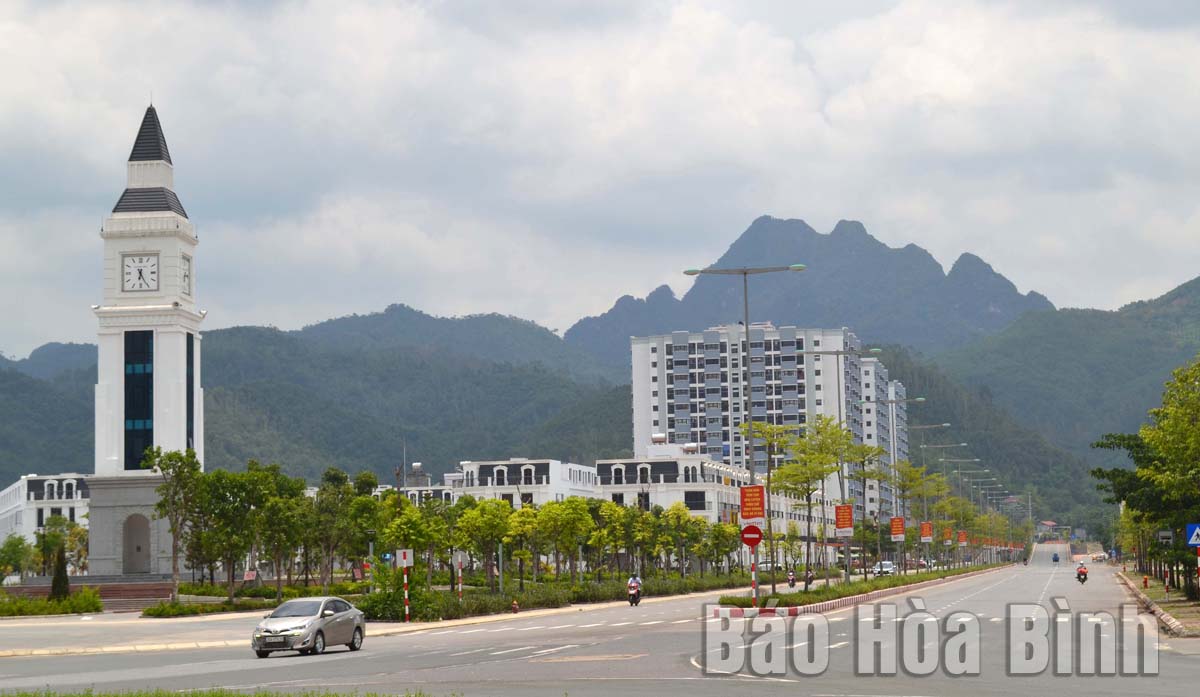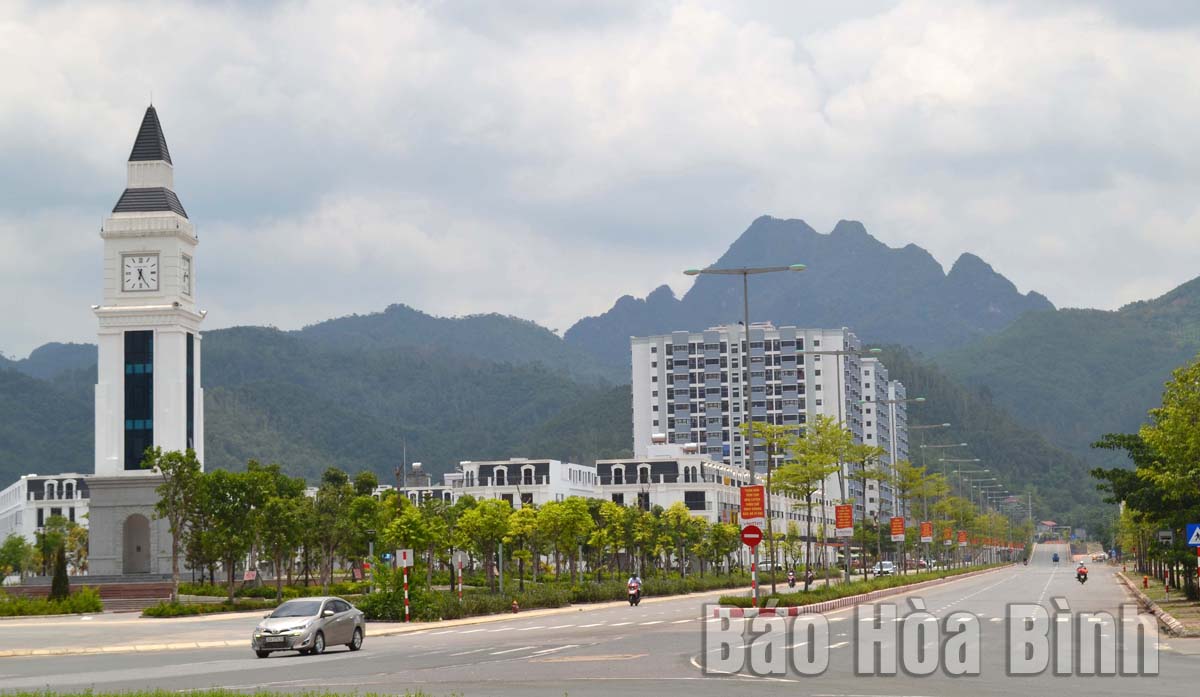(HBO) – Positive changes have been seen in Hoa Binh city since it was planned to become a tier-2 city by 2025 at the 2nd congress of the city Party Organisation for the 2020-2025 term.
Extended Chi Lang street connects National Highway 6 and an urban area in Hoa Binh city.
In 2020, Ky Son district and Hoa Binh city were merged into a new city with ten wards and nine communes, covering an area of 348.65 sq.km and having a population of over 135,000 people. Being adjacent to Hanoi capital, the gateway to the Northwestern region, Hoa Binh city has many conditions for urban development, tourism, and commerce, which are advantages for it to satisfy the criteria of a tier-2 city.
The city's authorities clearly defined key jobs to achieve the goal. In terms of planning, the city is identified as the central urban area of the northern province of Hoa Binh, a satellite of Hanoi capital, a bridge connecting the capital region and the northwestern region.
Permanent Deputy Secretary of the municipal Party Committee Hoang Van Minh said that the city's Party Committee focuses on leading and directing a project on adjusting the master planning scheme for the city’s development towards 2045, detailed planning with the scale of 1/500; setting up urban development programmes, and architecture management regulations. After the planning work, the province has been seeking resources for infrastructure investment and management.
The city's Party Committee also issued Resolution No. 03-NQ/TH.U for the first time on the responsibility of setting an example of cadres and party members, especially heads, leaders and managers at all levels in urban management. The Party Committees of wards and communes inspect and review violations committed by party members. About 1,030 party members in 18 wards and communes were found not properly complied with regulations on urban and land management. Up to now, Party members have dismantled violating works, creating a good effect in establishing urban civilised order.
The city promotes standardisation of cadres suitable for job positions; improves responsibility, and public service ethics. The city has also implemented breakthrough solutions in administrative reform. For three consecutive years from 2020 to 2022, the city ranked first in the province in administrative reforms and the satisfaction of people and organisations.
The city is getting closer to fully meeting the criteria of a tier-2 city after three years of implementing the resolution of the 2nd Congress of the city Party Organisation. Its transport infrastructure has developed strongly with many projects being invested in, renovated and built such as Hoa Binh 2 bridge, Hoa Binh 3 bridge, provincial roads 433 and 435, and the extended Chi Lang road. Urban, industrial and commercial infrastructure also attracted private investment. Many residential areas and housing projects were built, creating a new look for the city.
Da Giang dike road was expanded. Projects on industrial zones and clusters on the left bank of Da River, Binh Phu, and Yen Quang continue to attract investors, creating many jobs, and increasing population size. Many farmers have become workers.
It is estimated that by June 30, 2023, the average growth rate of total production value will reach 17.3% with per capita income of 64.4 million VND (over 2,700 USD), total state budget revenue of 425.9 billion VND, and urbanisation rate of 78.33%. Economic structure shifts in the right direction. It is estimated that in 2023, the rate of non-agricultural workers will increase to 70%, and the rate of poor households decreased to 1.18%.
Head of the city's Urban Management Division Nguyen Viet Hung said that the city has achieved three out of five criteria for a tier-2 city and is expected to reach 74.58 out of a total of 100 points.
Secretary of the city's Party Committee Nguyen Van Thang said that the achievements are of great significance, creating the foundation, position, and strength for the city to complete the goals of the 2nd Congress of the city Party Organisation./.



